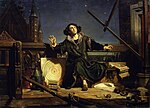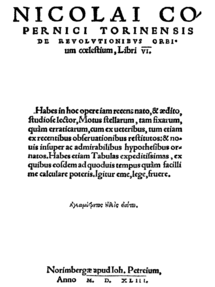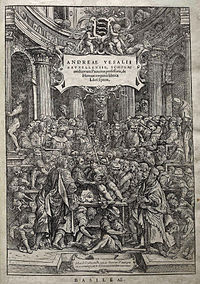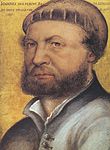
The 16th century began with the Julian year 1501 and ended with either the Julian or the Gregorian year 1600 (MDC), depending on the reckoning used.

The 1490s decade ran from January 1, 1490, to December 31, 1499.
The 1540s decade ran from 1 January 1540, to 31 December 1549.

Year 1546 (MDXLVI) was a common year starting on Friday of the Julian calendar.
The 1470s decade ran from January 1, 1470, to December 31, 1479.

Year 1540 (MDXL) was a leap year starting on Thursday of the Julian calendar.

Year 1547 (MDXLVII) was a common year starting on Saturday of the Julian calendar.

Year 1545 (MDXLV) was a common year starting on Thursday of the Julian calendar.
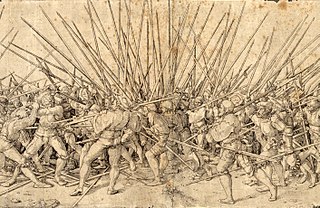
1544 (MDXLIV) was a leap year starting on Tuesday of the Julian calendar, the 1544th year of the Common Era (CE) and Anno Domini (AD) designations, the 544th year of the 2nd millennium, the 44th year of the 16th century, and the 5th year of the 1540s decade. As of the start of 1544, the Gregorian calendar was 10 days ahead of the Julian calendar, which was the dominant calendar of the time.

Year 1529 (MDXXIX) was a common year starting on Friday of the Julian calendar.
Year 1491 (MCDXCI) was a common year starting on Saturday of the Julian calendar.

Year 1470 (MCDLXX) was a common year starting on Monday of the Julian calendar.
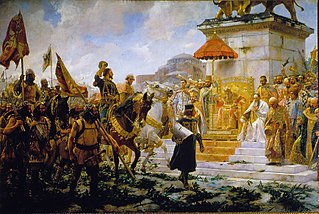
Year 1303 (MCCCIII) was a common year starting on Tuesday of the Julian calendar.

The Italian War of 1542–1546 was a conflict late in the Italian Wars, pitting Francis I of France and Suleiman I of the Ottoman Empire against the Holy Roman Emperor Charles V and Henry VIII of England. The course of the war saw extensive fighting in Italy, France, and the Low Countries, as well as attempted invasions of Spain and England. The conflict was inconclusive and ruinously expensive for the major participants.

The Habsburg monarchy and the Ottoman Empire waged a series of wars on the territory of the Kingdom of Hungary and several adjacent lands in Southeastern Europe from 1526 to 1568. The Habsburgs and the Ottomans engaged in a series of military campaigns against one another in Hungary between 1526 and 1568. While overall the Ottomans had the upper hand, the war failed to produce any decisive result. The Ottoman army remained very powerful in the open field but it often lost a significant amount of time besieging the many fortresses of the Hungarian frontier and its communication lines were now dangerously overstretched. At the end of the conflict, Hungary had been split into several different zones of control, between the Ottomans, Habsburgs, and Transylvania, an Ottoman vassal state. The simultaneous war of succession between Habsburg-controlled western "Royal Hungary" and the Zápolya-ruled pro-Ottoman "Eastern Hungarian Kingdom" is known as the Little War in Hungary.

The siege of Nice occurred in 1543 and was part of the Italian War of 1542–46 in which Francis I and Suleiman the Magnificent collaborated as part of the Franco-Ottoman alliance against the Holy Roman Emperor Charles V, and Henry VIII of England. At that time, Nice was under the control of Charles III, Duke of Savoy, an ally of Charles V. This is part of the 1543–1544 Mediterranean campaign of Barbarossa.

The Franco-Ottoman alliance, also known as the Franco-Turkish alliance, was an alliance established in 1536 between Francis I, King of France and Suleiman I of the Ottoman Empire. The strategic and sometimes tactical alliance was one of the longest-lasting and most important foreign alliances of France, and was particularly influential during the Italian Wars. The Franco-Ottoman military alliance reached its peak with the Invasion of Corsica of 1553 during the reign of Henry II of France.

The siege of Esztergom occurred between 25 July and 10 August 1543, when the Ottoman army, led by Sultan Suleiman the Magnificent, besieged the city of Esztergom in modern Hungary. The city was captured by the Ottomans after two weeks.

The Rough Wooing, also known as the Eight Years' War, was part of the Anglo-Scottish Wars of the 16th century. Following its break with the Catholic Church, England attacked Scotland, partly to break the Auld Alliance and prevent Scotland being used as a springboard for future invasion by France, partly to weaken Scotland, and partly to force the Scottish Parliament to confirm the existing marriage alliance between Mary, Queen of Scots, and the English heir apparent Edward, son of King Henry VIII, under the terms of the Treaty of Greenwich of July 1543. An invasion of France was also contemplated.

The Ottoman-Habsburg War of 1540–1547 was a conflict between the Ottoman Empire and the Habsburg monarchy supported by their vassals. The war ended in Ottoman victory in 1547 after signing the peace of Edirne.
